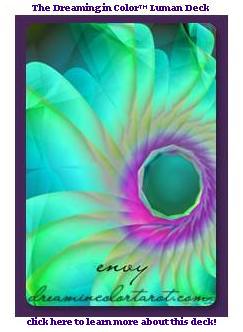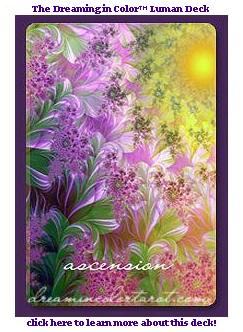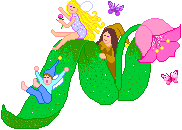Spearmint: A New Natural Antimigraine Remedy
A Personal Anecdote with Spearmint (Mentha spicata) as Migraine
Prophylaxis
M.T. Nieh, Ph.D., Independent Scholar, Rensselaer, NY
(mintresearch@yahoo.com)
The author’s serendipitous discovery revealed that
a decoction of a spearmint species (Mentha spicata, Lamiaceae)
successfully treated her migraine headache attacks. This
is a very easily prepared and inexpensive remedy with no
adverse side effect. This remedy exceeds the efficacy of
large doses of riboflavin (vitaminB2), that has been reported
as prophylaxis for migraines 1,2,
and that the author used it for over two years before spearmint.
 Consumption
of 5-6 cups of a spearmint decoction of a species grown
in the garden miraculously cleared her headache within 75
minutes one summer day in 2001. Subsequent consumption of
this decoction became a daily refresher. The author experienced
no additional migraine problems.
Consumption
of 5-6 cups of a spearmint decoction of a species grown
in the garden miraculously cleared her headache within 75
minutes one summer day in 2001. Subsequent consumption of
this decoction became a daily refresher. The author experienced
no additional migraine problems.
The author proposes a possible correlation between the
pharmacological activities of sesquiterpenoids as found
in feverfew, butterbur, monoterpenoids as found in cannabis,
and of monoterpenoids as found in spearmint. She speculates
that those terpenoids that are potential migraine remedies
might be stereospecific (levorotatory). She further promotes
studies of spearmint decoction as a safe and very low-cost
natural antimigraine remedy.
1. Schoenen, J., Lenaerts, M., Jacquy, J.:
Effectiveness of high-dose riboflavin in migraine prophylaxis,
Neurology, 50, February 1998, 466-470.
2. Boehnke, C., Flach, U., Reuter, U., et al.: High-dose
riboflavin treatment is efficacious in migraine prophylaxis,
Eur. J. Neurol., July 2004, 11(7), 475-7.
Preparation of Spearmint Decoction
Into a 4-qt crock-pot, place 6-7 pieces of fresh or dried
above-ground (leaves and stems) parts of a spearmint (mentha
spicata) plant, 10-12 inches/piece. Add hot water to the
top of the pot, set the pot to “high” until
the water boils. Decant and drink the clear dark amber color
liquid without condiments. Drink 6-7 cups within 90 minutes
for an acute attack.
 Alternatively,
if spearmint plant is not readily available, commercial
Organic Spearmint tea bags are available at natural food
stores. I suggest that the tea made from the bags be concentrated.
Alternatively,
if spearmint plant is not readily available, commercial
Organic Spearmint tea bags are available at natural food
stores. I suggest that the tea made from the bags be concentrated.
Use one bag in 8oz hot water in a ceramic/glass CLOSED
container (to avoid evaporation of essential oils). Allow
it to boil 3-5 minutes until the liquid is clear dark amber
color. Drink 6-7 cups within 90 minutes for an acute attack.
For prophylaxis: Drink a more diluted tea several glasses
daily.
Please send your comments to
mintresearch@yahoo.com
Marjorie Nieh is trained an Organic Chemist whose professional
associations included the DuPont, Eastman Kodak companies,
several smaller corporations and several universities in
the East Coast. Currently, she is an Independent Scholar
who actively conducts research on Complementary and Integrative
Medicine based on her personal experiences. Besides her
professional interests, she is an active participant of
the martial arts. She owns a black belt in Tae Kwon Do and
has been an instructor for many years. To complement a chemical
profession, Marjorie has also been a Chinese cooking instructor
in which she specializes in her hands-on techniques to prepare
healthful meals. She focuses on her Complementary and Integrative
Medicine research in which her unique background and experiences
would well benefit not only the scientific and medical organizations
but also wellness centers and spiritual retreats throughout
the globe.

BIOGRAPHY
MARJORIE T. NIEH, Ph.D.mintresearch@yahoo.com
Marjorie Nieh is trained an Organic Chemist (Ph.D., Purdue
University) whose professional associations included the
DuPont, Eastman Kodak companies, several smaller corporations
and several universities in the East Coast. She was born
in Shanghai, China who immigrated to the US as a teenager.
She maintains her Chinese culture and philosophy in addition
to her fluency in several dialects of the Chinese language.
Currently, she is an Independent Scholar who actively conducts
research on Complementary and Integrative Medicine based
on her personal experiences. For example, a serentipidous
discovery of a spearmint decoction miraculously treated
her migraine in 2001. Her vigilant literature research led
her to speculate that chemicals in spearmint share the biological
activities with those chemicals (terpenoids) contained in
the known natural migraine prophylaxes, e.g. feverfew and
butterbur.
Besides her professional interests, she is an active participant
of martial arts. She owns a black belt in Tae Kwon Do and
has been an instructor for many years. She is an advocate
of martial arts tenets: courtesy, modesty, perseverance,
self-control, integrity and indomitable spirit. With less
intense activities, she finds tai chi, qi gong, yoga and
pilates are helpful in alleviating her constant back pain
due to a severe scoliosis that has been progressed to 60
degrees at the rate of one degree per year recently. Although
back surgeons suggested surgery on her severe back condition,
her firm belief has been that physical activities far outweigh
a highly invasive procedure.
To complement a chemical profession, Marjorie has also
been a Chinese cooking instructor in which she specializes
in her hands-on techniques to prepare healthful meals.
Lounging into a new career, she focuses on her Complementary
and Integrative Medicine research in which her unique background
and experiences would well benefit not only the scientific
and medical organizations but also wellness centers and
spiritual retreats throughout the globe.

Abstract of presentation to the 2005 Natural Products
Gordon Research Conference:
A Personal Anecdote with Spearmint (Mentha
spicata) as Migraine Prophylaxis
M.T. Nieh, Ph.D., Independent Scholar, Rensselaer, NY
(mintresearch@yahoo.com)
The author’s serendipitous discovery revealed that
the brewed tea of a spearmint species (Mentha spicata, Lamiaceae)
has successfully treated her migraine headache attacks.
This is a very easily prepared and inexpensive remedy with
no adverse side effect. This remedy exceeds the efficacy
of large doses of riboflavin (vitaminB2), that has been
reported as prophylaxis for migraines, and that the author
used it for over two years before spearmint.
The major component in the spearmint is l-carvone or R-(-)-carvone
(~70%) in addition to nearly sixty minor components, many
of which are terpenoids.
The known natural antimigraine remedies, e.g. feverfew
(Tanacetum partheniuim) and butterbur rhizomes (Petasites
hybridus, Asteraceae) contain sesquiterpene lactones and
sesquiterpene esters, respectively. Studies showed that
they inhibit: blood platelet aggregation, release of serotonin
in addition altering the arachidonic acid pathway which
decreases the synthesis of the inflammatory chemical mediators,
prostaglandins and leukotrienes.
A most recent research study revealed that terpenoids of
the non-psychoactive cannabis, cannabidiol (CBD) and terpineol,
modify the serotonin-binding activity at the 5HT1a and 5HT2a
receptor sites. The potential of CBD suggests an acutely
active anti-migraine drug while that of terpineol, putatively
prophylactic.
The author proposes a possible correlation between the
pharmacological activities of sesquiterpenoids as found
in feverfew, butterbur, monoterpenoids as found in cannabis
and of monoterpenoids as found in spearmint. She speculates
that those terpenoids that are potential migraine remedies
might be stereospecific (levorotatory), which could be lead
targets for the development of anitmigraine drugs. She further
promotes studies of spearmint tea as a safe and very low-cost
natural antimigraine remedy.







